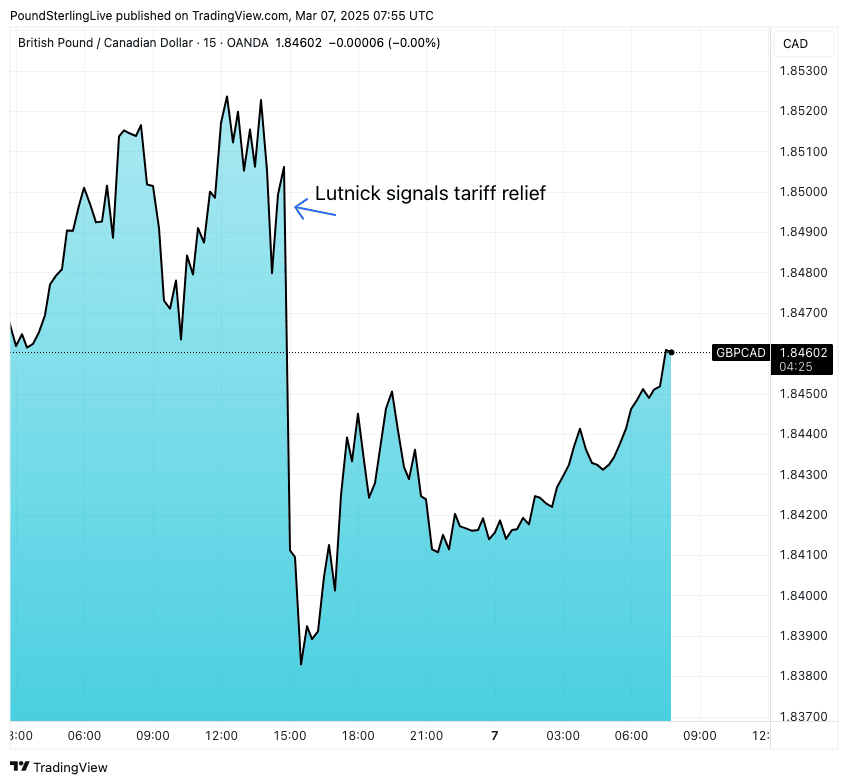
Trump backed down, but only partially. Above: File image of Donald Trump. Image: Official White House distribution.
A shallow CAD recovery suggests investors see risks remaining.
The Canadian Dollar recovered on the day U.S. Donald Trump would pare back tariffs on Canada and Mexico.
Trump delayed imposing tariffs on imports covered by the North American trade agreement (USMCA) until April 2. This should exempt about half of the goods affected by the new 25% tariffs.
"The coverage under USMCA trade agreement, which was renegotiated in President Trump’s first term, relates mostly to rules of origin requirements, so the partial exemption could be seen as addressing concerns over re-imports from third countries," explains Peter Sidorov, a strategist at Deutsche Bank.
"They've been working much harder lately, do you notice that? On people coming in and drugs. We've made tremendous progress on both," Trump said when signing an order to roll back the tariffs.
But analysts say the rollback after just two days is more likely a reaction to the significant fall in U.S. stock markets and concerns by members of his Republican party that tariffs were harming the country's economic prospects.
Canada said it would delay its plan for a second phase of retaliatory tariffs on C$125BN worth of U.S. products to April 02.
Canada will maintain the tariffs announced on Tuesday on about C$30BN of goods imported from the U.S., with U.S. President Justine Trudeau saying he wants all U.S. tariffs removed.
Above: Pound-to-Canadian Dollar at 15-minute intervals.
Mexico's President welcomed "constructive" talks with Trump.
The Canadian Dollar rose when Howard Lutnick, the U.S. Commerce Secretary, telegraphed earlier on Thursday that the exemptions were in the pipeline.
"The news caused the Canadian dollar and Mexican peso to rally sharply," says Fawad Razaqzada, an analyst at City Index.
However, the rally is shallow, and by the time of writing on Friday, about half of CAD's gains against the likes of the Euro and Pound have been pared.
Caution will limit the CAD's recovery, with traders wary of being bitten by Trump again on April 02.
"With this being a delay rather than a lasting exemption and with reciprocal tariffs also expected to be announced after April 2, this leaves plenty of lingering tariff uncertainty," says Sidorov.
The U.S. President warned that relief for automakers would be short-lived, saying he would not sign another extension next month.
"I told them that's it, this is a short-term deal," he president said, adding he told auto executives not to come back and ask for relief again.
While there will be relief, significant uncertainty and disruption remain, meaning the Canadian economy still faces challenges.
"Even if those tariffs are soon rolled back, investment and consumption are likely to be weaker this year than the Bank of Canada anticipated and the economy will require more policy support," says Stephen Brown, Deputy Chief North America Economist at Capital Economics.
He expects another 25 basis point cut from the Bank of Canada next week.
The Bank of Canada was supposed to be nearing the end of its rate cutting cycle, which would have afforded the Canadian Dollar significant support.
But tariffs and an economic slowdown mean the Bank of Canada cannot rest yet.
This implies ongoing struggles for the currency.

